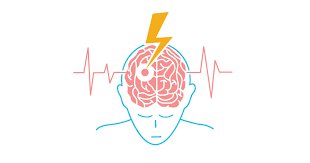When it comes to physical activity, the options are endless. From team sports like soccer and basketball to individual pursuits like running and swimming, each offers its unique set of health benefits. But if you are wondering which sport holds the title for the best overall health benefits, the answer is not straightforward. It depends on various factors, including personal preferences, fitness goals, and physical conditions. In this blog, we will explore several popular sports, their health benefits, and help you determine which one might be the best for you.

The Science of Sports and Health
Engaging in any form of sport can lead to numerous health advantages. These benefits often include improved cardiovascular fitness, enhanced muscle strength, increased flexibility, better mental health, and reduced risk of chronic diseases. According to the World Health Organization, regular physical activity can significantly lower the risk of heart disease, stroke, type 2 diabetes, and even certain cancers.
Moreover, sports often promote social interaction and teamwork, which can improve mental well-being and contribute to a more fulfilling life. With these factors in mind, let is dive into some of the most popular sports and explore their specific health benefits.
1. Running
Cardiovascular Health: Regular running strengthens the heart, improving circulation and reducing blood pressure. Weight Management: It burns significant calories, aiding in weight loss or maintenance. Bone Density: Weight-bearing exercises like running help maintain bone density, reducing the risk of osteoporosis. Mental Health: Running is known to release endorphins, which can improve mood and alleviate symptoms of anxiety and depression.
2. Swimming
Low Impact: The buoyancy of water reduces stress on joints, making it an ideal choice for those with injuries or arthritis. Strength and Endurance: Swimming builds muscle strength and endurance, engaging multiple muscle groups simultaneously. Cardiovascular Fitness: Like running, swimming improves heart health and lung capacity. Mental Relaxation: The soothing nature of water can reduce stress levels and promote relaxation.
3. Cycling
Low Impact: Like swimming, cycling is gentle on the joints, making it suitable for all ages. Leg Strength: It primarily strengthens the lower body, improving muscle tone and endurance. Mental Well-Being: Outdoor cycling can be particularly invigorating, allowing cyclists to enjoy nature and socialize. Sustainable Transport: Using a bike for commuting contributes to environmental health as well.
4. Soccer
Cardiovascular Fitness: The continuous movement involved in soccer helps improve heart health and stamina. Coordination and Agility: Dribbling, passing, and shooting enhance hand-eye coordination and overall agility. Social Interaction: Playing soccer fosters teamwork, cooperation, and social connections. Weight Management: The high-energy nature of the sport helps in burning calories.
5. Yoga
Flexibility and Balance: Regular practice improves flexibility and balance, reducing the risk of injuries. Mental Clarity: Yoga emphasizes mindfulness and breathing techniques, promoting mental clarity and relaxation. Stress Relief: The meditative aspect of yoga helps lower cortisol levels, alleviating stress. Holistic Approach: It fosters both physical and mental wellness, making it a comprehensive practice.
6. Tennis
Cardiovascular Endurance: The constant movement during a match improves cardiovascular health. Hand-Eye Coordination: Hitting the ball requires sharp reflexes and coordination. Social Engagement: Whether playing doubles or singles, tennis can be a social sport that encourages interaction. Mental Challenge: The strategic aspects of the game promote cognitive function.
Making the Right Choice for You
While it is tempting to declare a single sport as the best for health benefits, the truth is that the ideal choice varies from person to person. Consider the following factors when choosing a sport:
Personal Preference | Physical Condition | Goals | Social Environment | Accessibility
Your enjoyment of a sport plays a crucial role in maintaining a long-term commitment. If you love what you are doing, you are more likely to stick with it. Assess any pre-existing health conditions or injuries. Low-impact sports like swimming or cycling might be better suited for those with joint concerns. Are you looking to build endurance, strength, or flexibility? Different sports target different aspects of fitness, so align your choice with your fitness goals. If you thrive in social settings, team sports like soccer or basketball might be more appealing. Conversely, if you prefer solitude, activities like running or yoga could be a better fit. Consider the facilities available in your area. If you have easy access to a pool, swimming could be your go-to, while a nearby soccer field might make team sports more feasible.
Conclusion
Ultimately, the best sport for health benefits is the one that resonates with you personally. While each sport has its unique advantages, they all contribute to better physical and mental well-being in different ways. The key is to find a sport that you enjoy and can sustain over time. Whether you are running on a trail, swimming laps, cycling through the city, or engaging in a spirited game of soccer, remember that consistency is vital. So lace up your shoes, grab your gear, and dive into the world of sports. Your body and mind will thank you!







Comments
Leave a comment